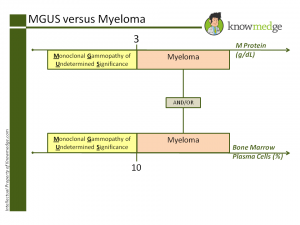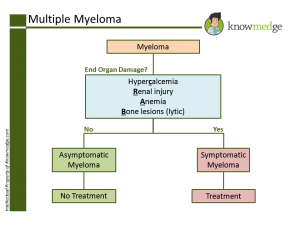Medicine in the Media: Tom Brokaw Diagnosed with Multiple Myeloma
Former veteran NBC News anchor Tom Brokaw revealed on Tuesday that he has multiple myeloma. The diagnosis was made last August at the Mayo Clinic and he has been receiving treatment since then while working as an NBC News special correspondent. Currently, the 74-year-old is contributing to NBC’s coverage of the Winter Olympics in Sochi, Russia. Fortunately, his physicians have been pleased with his progress, Brokaw and his employer have shared. Most of the reports in the mainstream media have described multiple myeloma as simply “cancer of the bone marrow” and spent much more time and space discussing Brokaw’s career.
Interestingly, of some of the major news organizations’ coverage—including the LA Times, CNN, Huffington Post, Reuters—the one that had the most in-depth coverage of the multiple myeloma diagnosis was USA Today, not usually known as a hub of medical content. One of my former professors at the David Geffen School of Medicine at UCLA, Hemotologist Gary Schiller MD, was quoted in multiple parts of USA Today’s article. Some highlights:
- Although on average, patients survive five to seven years after diagnosis, some can survive more than a decade due to new therapeutic approaches, Schiller said .
- “There are plenty of survivors in their 70s and 80s,” he stated.
- The article described the underlying cause of the disease as cells creating “ineffective antibodies, which cause the kidneys to become filled with a thick, molasses-like substance that impairs their function.”
- Schiller said that patients may present with bone deterioration, kidney problems or anemia, (and calcium elevation)
Here we review Multiple Myeloma from the perspective of the ABIM, Internal Medicine shelf, and USMLE Step exams.
EPIDEMIOLOGY
Median age of the diagnosis of Multiple Myeloma is 70 years, placing the 74-year-old Brokaw in the prime age demographic. However, African-Americans are more commonly diagnosed with the condition than Caucasians.
BACKGROUND
Multiple myeloma belongs to a family of disorders known as plasma cell dyscrasias, which consist of abnormal proliferation of monoclonal plasma cells. Others in this group include:
- Monoclonal Gammopathy of Undetermined Significance (MGUS)
- Waldenstrom Macroglobulinemia
- Light chain-associated Amyloidosis (AL Amyloidosis)
Distinguishing MGUS and Myeloma is a popular question asked by attending physicians and exams alike as the former is benign and the latter is malignant. The slide below helps to differentiate the two. Serum and urine protein electrophoresis identifies the presence or absence of an M protein spike, which is seen in Multiple Myeloma.

Click image above for larger size
MGUS is detected only on laboratory studies and does not produce symptoms. Patients with MGUS should be monitored every 6-12 months for evidence of progression to multiple myeloma. They should also be offered bone mineral density testing for osteoporosis which can result from MGUS.
SIGNS AND SYMPTOMS
As the USA Today article pointed out, the classic features of multiple myeloma are remembered by the mnemonic CRAB: Calcium elevation (hypercalcemia), Renal failure, Anemia, Bone lesions. As the bone lesions are lytic in myeloma, a bone survey rather than a bone scan is ordered. If a patient meets the CRAB criteria, he or she is considered to have symptomatic myeloma. Treatment should be initiated. On the other hand, patients with asymptomatic myeloma (or those with MGUS) should not be treated.

Click image above for larger size
TREATMENT
There are four main therapeutic agents used in multiple myeloma:
- Immunomodulatory medications: Thalidomide and Lenalidomide
- Proteosome inhibitor: Bortezomib
- Alkylating agent: Melphalan
Myeloma is rarely curable solely with chemotherapy. Only patients who undergo hematopoietic stem cell transplantation (HSCT) may be cured.
Younger patients (those less than 75 years of age, including Brokaw) without significant co-morbidities are candidates for autologous stem cell transplantation:
- Before a transplant can be performed, induction chemotherapy is administered with the steroid Dexamethasone + (Thalidomide or Lenalidomide).
Older patients and others who are not candidates for autologous hematopoietic stem cell transplants:
- Melphalan + Prednisone + Thalidomide (or Bortezomib)
It’s difficult to remember the details, but know that melphalan induction therapy should NOT be used as induction therapy for patients who may undergo stem cell transplantation as its use is associated with myelosuppression and stem cell toxicity.
Here’s hoping that Brokaw and any other patients you treat for multiple myeloma in the future fare well.







